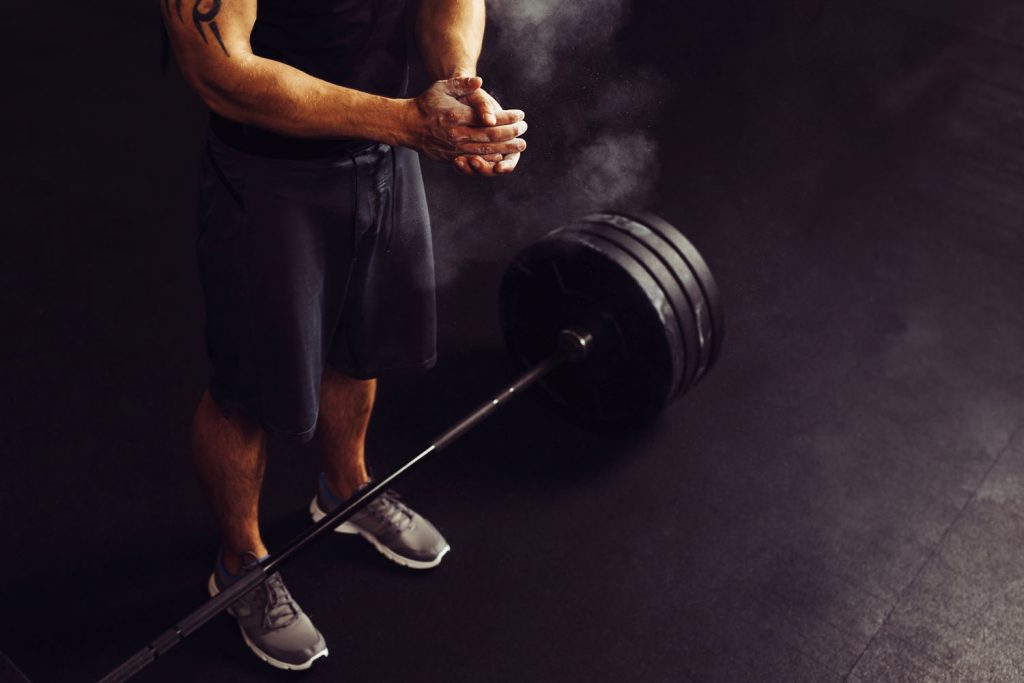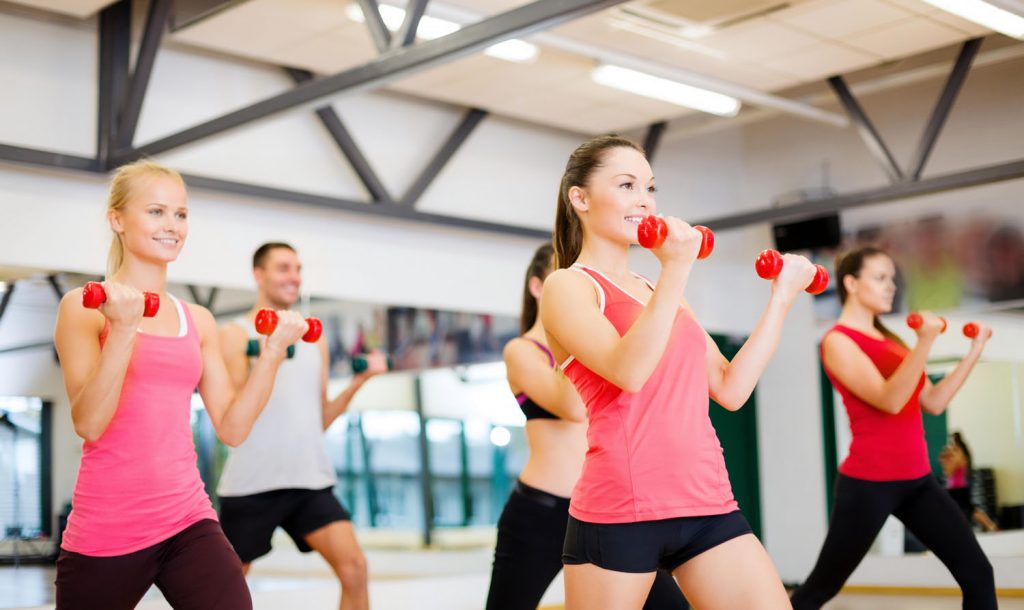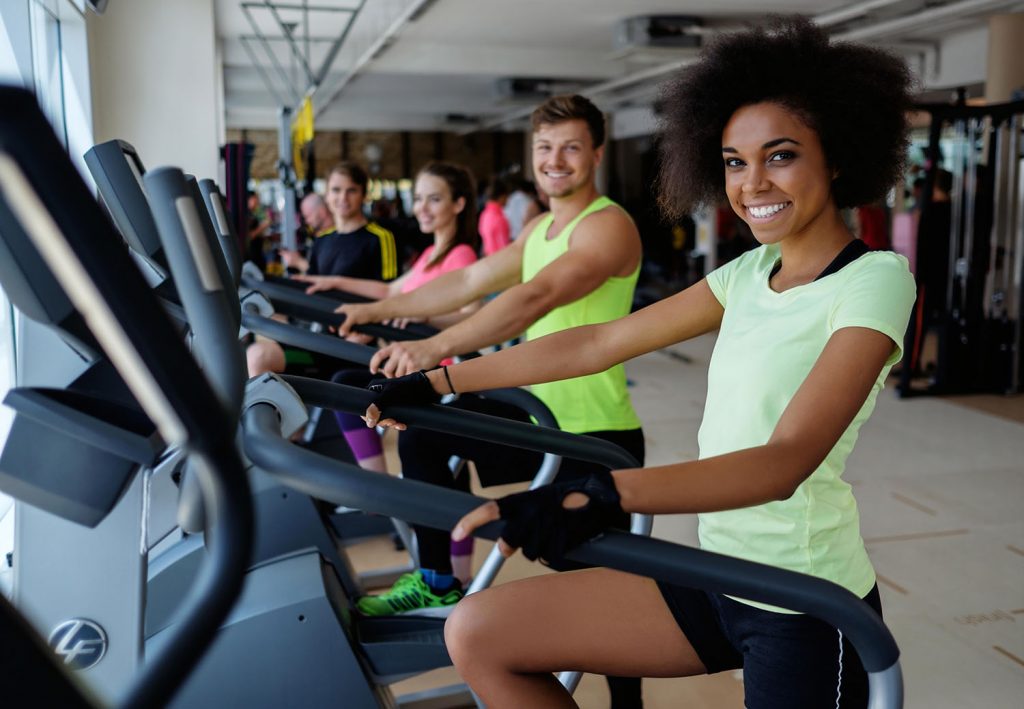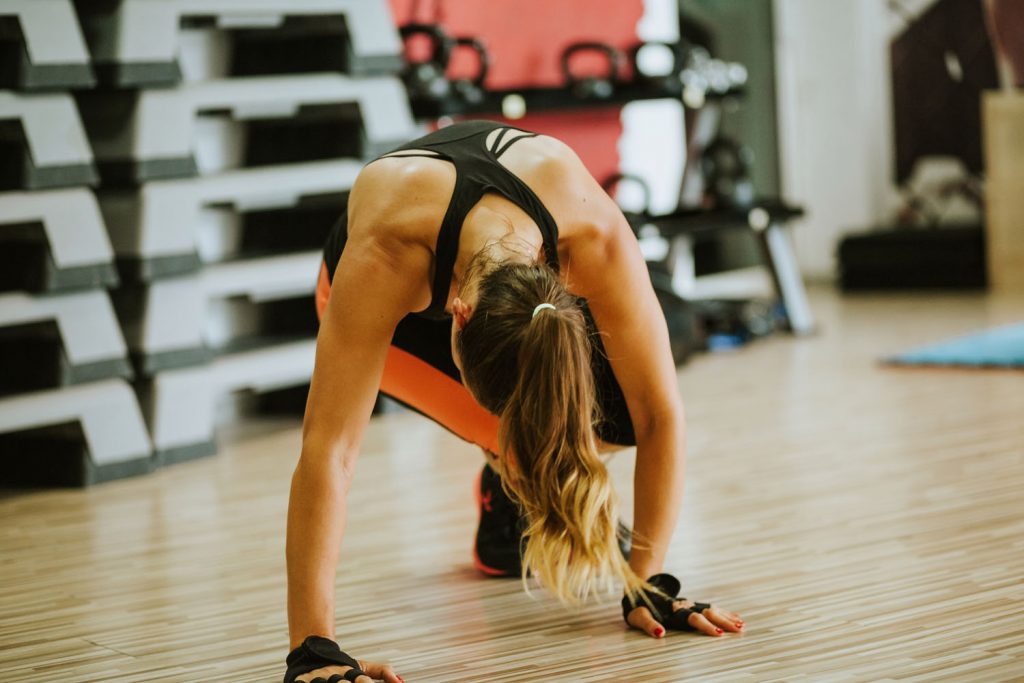Workout Calories Burned

Use this calculator to quickly estimate your total caloric burn rate for a combination of up to 20 different exercises.
Simply enter your height, weight, gender, age, what exercises you did, and how long you worked out for. This calculator allows you to select from over 200 different exercises!
We also offer calculators to estimate body fat and help people reach their weight loss goals.

How to Get the Most Out of Your Exercise Routine
Let’s be honest: Exercise isn’t everybody’s cup of tea, particularly if you’re not very active. It’s extra challenging when you’re busy and all you want to do on weekends is stay home and binge-watch shows. On top of that, if you’re exhausted and stressed, you may tend to crave more comfort food.
For many of us who start exercising, lack of motivation can send our fitness plans down the drain. But don’t fret. If you fall eight times, you can get up nine times. Even if you miss a workout session or more, what’s important is you still go back to your routine. Once you adapt this “I can” mindset, it will certainly help you follow through.
In this guide, we’ll talk about how to develop a fitness routine that suits you. We’ll also discuss some of the best workouts for beginners, as well as effective exercises you can do to burn calories and lose fat fast. And to help keep you motivated, we’ll give you tips on how to make exercise a more enjoyable activity.
Developing an Exercise Routine that Works for You

When you’re a beginner, it’s normal to feel overwhelmed with workouts. But if you do it one step at a time, it won’t feel as burdensome.
To help you out, we’ll break down exercise into its most basic components. Fitness experts outlined the four major elements of exercise, also known as the FITT principle. FITT stands for frequency, intensity, time, and type. According to VeryWell Fit, considering these four components will guide you in creating workouts that suit your fitness level.[1] Ultimately, you can tailor the FITT principle to reach your health goals.
FITT is also commonly used in research that explores how exercise can improve different ailments. One example in the Integrative Medicine Journal used the FITT principle as a set of “written exercise prescriptions” to help prevent common chronic diseases.[2] It also studied how exercise can treat or reverse osteoporosis and cardiovascular disease, as well as improve diabetes management.
To get started, here’s how the FITT principle is applied:
Frequency
Ask yourself, “how often can I exercise in a week?” Frequency is one of the first things you should consider for an effective workout plan. Depending on your schedule, you can set exercise sessions at least two to three times a week. If you have more time, you can do it five days a week and rest for twp. Frequency will also be determined by the kind of exercise you’ll be doing, how intense you’ll be working out, and your fitness level.
While there are many types of exercise, we can focus on two main workouts: resistance or strength training and cardiovascular exercise, also known as aerobic workouts.
- Resistance training: The Department of Health and Human Services (HHS) recommends strength and muscle training exercises at least twice a week for adults, and three times a week for adolescents.[3]
- For cardio: For aerobic or cardiovascular exercises such as walking, running, and biking, HHS suggests 150 minutes of moderate aerobic activity a week, and 60 minutes of moderate aerobic exercise for adolescents. For adults, you can do three 50 minute aerobic workouts a week.
Overtime, if you want to increase your fitness goals, you can try to add more workout sessions in a week. But as a beginner, it would be good to start with two workout sessions a week, then work your way up to three sessions by the following week. Aim to maintain this frequency. Once you’ve established your routine, say in the next three to four weeks, it will easier to stick to your exercise schedule. But, “what if I miss a workout?” Don’t sweat. Again, just go back to your routine. What’s important is you keep going.
Intensity

This refers to how hard you are working your body during exercise. Expect your workout intensity to vary depending on the difficulty of the workout. For instance, as a beginner, you might find it hard to keep up with an intense 20-minutes aerobic routine. You can make adjustments by doing simpler movements. You might also need to start with lighter weights that usual.
- Resistance training: The Mayo Clinic states you should lift a comfortable amount of weight for 12 to 15 times.[4] If you think the weight is too heavy, try something lighter. This will help you avoid injury, as well as develop proper form. How many times should you lift? You can do two to three sets with 12 to 20 reps. If you use lighter weights, you can perform lesser sets and increase the repetition. Likewise, you can adjust to heavier weights as your muscle strength improves.
- For cardio: You’ll notice that aerobic intensity is referred to as light, moderate, or high intensity. Researchers measure this by how fast your heart rate goes. Generally, the HHS suggests moderate intensity for aerobic or cardiovascular exercises. On the other hand, high intensity workouts should be performed within a shorter period. Examples of this include 10 to 20-minute circuit training and high-intensity interval training.
Time
Consider how much time you can allot for exercise in a day. If you normally have a busy schedule, this is the moment to think of what activities you can block to make time for a workout. Whether you wake up early to run, or decide to hit the gym after work, it’s up to you. What matters is your fitness routine complements your current lifestyle. Here’s a tip: save at least 20 minutes to an hour of uninterrupted time for exercise.
The National Institutes of Health (NIH) recommends about 150 minutes of moderate exercise a week for adults.[5] That’s 50 minutes of physical activity three times a week. If you can workout five times a week, that’s 30 minutes a day. Want to squeeze in exercise daily? If you can spare 22 minutes a day for a workout, you still get 150+ of moderate exercise in a week.
- Resistance training: How long you lift weights and other strengthening exercises will depend on what muscle groups you are working. For instance, if you are focusing on your arms, it could take you about 15 to 20 minutes to lift weights. But if you want to do a full body workout, you’ll likely take an hour. This may include performing different movements like pushups, squats, lunges, and challenging burpees.
- For cardio: VeryWell Fit suggests around 15 to 20 minutes of cardio workout for beginners.[1] As you improve your resistance, you may be able to do 30 to 60 minutes of moderate cardio a day. Again, you don’t have to do it in one continuous session. For instance, you can split up your 30 minute cardio into two 15 minute sessions. That’s one in the morning, and another in the afternoon. If you want to do a high intensity workout, you can shorten your session to 20 minutes.
Type

You have greater control over the type of exercise you can do. At the end of the day, you decide what kind of exercise to perform and which muscles groups to focus on. By choosing the right exercises that match your fitness level and interests, you can make exercise a fun activity.
- Resistance training: Strength workouts are not just limited to barbells, bands, and pulling machines. Men’s Health states that if you do not have access to equipment, you can perform bodyweight exercises at home.[6] This includes pushups, lunges, leg lifts, and dips. Pay attention to your form. Doing movements correctly makes exercise more efficient and also helps prevent injury.
- For cardio: Cardio exercises refers to any movement that can get your heart rate up. For beginners, you can start with brisk walking until you are comfortable enough to run. You can also try cycling and elliptical machines at the gym. After a while, this can get repetitive and boring. If you’re looking to make it more interesting, you can sign up for a zumba class or a power yoga session. For more rigorous workouts, you can try high-intensity interval training (HIIT) which can target most if not all muscle groups in your body.[7]
The Best Workouts for Beginners

If you’ve decided to commit to a fitness plan, then you’re on your way to a better, happier life. “Exercise is a magic pill,” says Michael R. Bracko, chairman of the American College of Sports Medicine’s consumer information committee.[8] Apart from preventing heart disease, managing arthritis and other age-related diseases, it can help fight depression. According to research by Healthline, regular physical activity helps release endorphins and other happy hormones such as serotonin and dopamine.[9] It’s one of the best things you can do for your mental health.
So what kind of exercises should beginners do? Here’s are some of the best workouts that are appropriate for beginners. Make sure to warm up by stretching and moving the rest of your body before doing any exercise.
Walking and Running
These are the most basic cardiovascular workouts you can do to get yourself going. For lower impact on your knees, walking at 15 to 20 minute intervals can work for you.
While it’s a good idea to go on a treadmill at home or the gym, you might find it more enjoyable to walk or run at park or any conducive public space. Being around nature also helps lighten your mood and relax you during your workout.
Walking and running burns a lot of calories. Livestrong states that a 30-minute walk can burn between 90 to 200 calories. For instance, if a person weighed 125 lbs. and walks at of 3.5 miles per hour, they can burn 108 calories in 30 minutes.[10] Running, on the other hand, burns more calories. A 30-minute jog can burn around 223 to 400 calories.[11]
Stationary Biking
If you need a low-impact workout for your joints, riding a stationary bike is a great option. It’s certainly not as strenuous as running or brisk walking. Stationary cycling is also safer than biking on the road. People with joint problems like seniors can reap its benefits. Stationary cycling strengthens leg muscles and bones while getting your heart rate up. According to Chron, a person who weighs around 150 lbs. can burn up to 246 calories in 30 minutes with moderate biking intensity.[12]
Elliptical Glider

Ellipticals are popular exercise machines in fitness clubs and homes. It also provides a low-impact cardio workout that reduces stress on your knees and legs. It’s the ideal exercise machine for seniors. Ellipticals are designed to follow the natural motion of ankles, knees and hip joints while walking, allowing you to move with less strain. When used properly, ellipticals can target a variety of muscles such as your chest, triceps, back, gutes, hamstrings, and quadriceps (the large muscle in front of your thigh).[13]
Just like treadmills, you can change the elliptical’s settings for a more challenging workout. When it comes to calories burned, a 160 lbs. person can burn around 345 calories for 30 minutes on an elliptical, according to Octane Fitness.[14]
Jumping Jacks
Want a high-impact cardio that will get you sweating fast? Do jumping jacks for a couple of minutes a day. Here’s a tip: Doing two to three sets with 25 to 30 reps will really get your heart pumping. When done properly, jumping jacks can burn around 100 calories in 10 minutes.[15] This workout helps improve muscle tone in your biceps, chest muscles, and calves. Plus, doing jumps literally wakes you up. It’s fun to do and helps keep your energy levels high.
Mountain Climbers
Mountain climbers work several muscle groups at once, such as your leg muscles, glutes, triceps, shoulders and core muscles. It’s also less straining on the spine compared to ab workouts that make you lie on your back.[16] For calories burned, if you weight around 150 lbs., you can burn 86 calories with 10 minutes of mountain climbers.[17]
If you’re not familiar with this exercise, mountain climbers require you to go down on all fours just like a plank position. Then, you bend one knee in. And as you stretch your knee back, you alternate it with the other knee. If you do this fast enough, mountain climbers can work just like a cardio exercise. To learn how to do it properly, you can watch the video below.
Shoulder Press
People tend to lose muscle mass as they age. This is why strength training is a must even when you’re older. One exercise that works upper body muscles thoroughly is the shoulder press. You can modify it by lifting lighter weights like dumbbells. For beginners, it’s best to do it with guidance from an experienced trainer. This will ensure you do the proper form and avoid injuries.
Doing shoulder presses help increase muscle and bone strength, as well as improve stability in your shoulders and arms.[18] As for how much calories it can burn, note that strength exercises usually don’t burn as much as cardio workouts. If you weight 150 lbs., you’ll burn around 36 calories for every 10-minutes of a seated dumbbell shoulder press.[19]
Chest Presses
This is another strength exercise that targets your upper body. It works your shoulder muscles, pectorals, and triceps. Chest presses are also considered one of the best chest exercises for building upper body strength.[20] Again, for best results, do this exercise with a personal trainer. Try chest presses with dumbbells if you’re uncomfortable with heavier barbells. For every 10 minutes, a person who weighs 150 lbs. can burn 36 calories by doing chest presses.[21]
Now that you know more about these workouts, do try them for yourself. Make an exercise regimen that incorporates both cardio and strength training for better weight loss results.
HIIT Workouts: A Quick Way to Burn Calories

Ever wondered if there’s a way to burn a lot of calories with shorter exercises? The answer is yes, it’s possible. However, it’s not as easy as you think. With this type of workout, you’ll need to do rigorous workout sessions to burn all those calories.
What is HIIT?
High-Intensity Interval Training (HIIT) is a cardiovascular workout strategy that alternates brief and intense exercises with short or slightly longer periods of rest. You can do ‘active rests’ in between intense workouts such as jogging in place or walking, which are lower impact moves.
HIIT is an extremely efficient exercise style. In fact, it packs the same training benefits as long endurance workouts. It’s great because it helps you lose body fat while retaining a lean body mass. A study shows HIIT improves heart health and even lowers blood sugar levels in people with type 2 diabetes.[21] Moreover, compared to a 40-minute run, a 10-minute HIIT workout can be a easier on your joints.
To give you an idea, here’s a simple example of a HIIT workout:
- Do 30 seconds of sprinting followed by 30 seconds of slow jogging or brisk walking.
- Repeat this exercise cycle for 10 minutes and you’ll complete a HIIT workout.
When it comes to burning calories, HIIT can be better than traditional cardio exercises.[22] Doing HIIT affects your body’s growth hormone levels, which increases your metabolism. Intense exercise switches your body’s repair cycle on hyperdrive, making you burn more fat. It also helps amps up your body’s fat burning capability up to 24 hours after your workout.
By doing just 20 minutes of HIIT training, VeryWell Fit notes that you can burn up to 320 calories. Some popular HIIT workout moves include the following exercises:
- Squats
- Jumping jacks
- Jump Lunges
- Plank jacks
- Butt kicks
- High knees
- Kettlebell squat jumps
- Overhead press
- Plank pulls
- V-holds
But of course, very intense training can overwork your muscles, leaving you with aches and pains. To avoid pain and injury, fitness coaches recommend doing 15 to 20 minutes of HIIT, no more than 3 times a week. And don’t forget to do proper stretching exercises before and after a HIIT workout. It’s also good to drink enough fluids to avoid dehydration.
If you’re looking to lose a lot of pounds, sign up for a HIIT class next time. It will surely get you moving, even for just 20 minutes at a time.
Keeping Your Workout Exciting

While exercise has plenty of benefits, it can get boring and predictable after a while. And without a fun routine, chances are you might lose motivation to get moving.
To keep it from getting boring, here are a few tips to spice up your workout routine.
- Exercise Outdoors – Doing your workout at the park just in time for sunset can help you relax by the end of the day. You can also try running or biking at different trails. Changing up your surroundings give you something to look forward to other than burning calories. A pleasant environment relieves stress and allows you to focus on yourself.
- Make a Workout Playlist – Listening to good music can be a great motivator for a run or intense workout. It’s also enjoyable to come up with a personalized playlist that amps up your energy. After all, it’s quite a mood killer to workout to a slow song. So get ready for your next workout with your favorite upbeat songs.
- Workout with a Friend – Some people enjoy working out when they do it with a buddy. Call a friend and ask them if they want to bond over a gym session or a quick run. It’s a great way to strengthen bonds while reaching your fitness goals.
- Enroll in an Exercise Class – Check out different classes at your gym. Classes are a good way to switch things up when you’re bored of running or biking alone. You can try yoga, HIIT classes, as well as Zumba dance classes. Attending these sessions also increases the social aspect of your workouts. You can gain new friends even after the class is done.
- Mix Things Up – Doing the same type of exercises are not challenging. You can level up your workout by trying new exercise moves. For instance, if you’ve never done planks or burpees, its likely time you try them out. Mix up your cardio and strength exercises every now and then. Don’t be afraid to challenge yourself. You got this!
Beginning an exercise routine is hard, and it’s tougher to maintain the course. But as long as you keep these workout tips in mind, you can stay committed to your fitness goals.
Need help tracking of your weightloss progress? Use our weight loss calculator.
Sources
- https://www.verywellfit.com/f-i-t-t-principle-what-you-need-for-great-workouts-1231593
- http://www.imjournal.com/resources/web_pdfs/popular/1007_oberg.pdf
- https://www.hhs.gov/fitness/be-active/physical-activity-guidelines-for-americans/index.html
- https://www.mayoclinic.org/healthy-lifestyle/fitness/in-depth/weight-training/art-20045842
- https://newsinhealth.nih.gov/2019/01/how-much-activity-do-you-need
- https://www.menshealth.com/uk/building-muscle/a756325/10-best-bodyweight-exercises-for-men/
- https://www.webmd.com/fitness-exercise/a-z/high-intensity-interval-training-hiit
- https://www.webmd.com/fitness-exercise/features/fitness-beginners-guide#1
- https://www.healthline.com/health/depression/exercise#1
- https://www.livestrong.com/article/294501-calories-per-mile-of-walking/
- https://www.livestrong.com/article/416133-the-amount-of-calories-burned-in-30-minutes-of-easy-jogging
- https://livehealthy.chron.com/average-calories-used-riding-stationary-bike-30-minutes-4307.html
- https://www.verywellfit.com/why-use-elliptical-trainers-3436596
- https://www.octanefitness.com/octaneblog/2015/11/19/how-to-burn-a-lot-of-calories-on-elliptical-machines/
- https://blog.decathlon.in/articles/jumping-jacks-how-to-do-and-its-benefits
- https://www.womenshealthmag.com/fitness/a28713948/how-to-do-mountain-climbers/
- https://www.sparkpeople.com/resource/calories_burned.asp?exercise=541&type=1
- https://woman.thenest.com/benefits-shoulder-press-exercises-4423.html
- https://www.sparkpeople.com/resource/calories_burned.asp?exercise=73&type=1
- https://www.sparkpeople.com/resource/calories_burned.asp?exercise=71&type=1
- https://www.medicalnewstoday.com/articles/325362
- https://www.verywellfit.com/high-intensity-interval-training-benefits-3119149
- https://www.webmd.com/fitness-exercise/features/how-to-stretch#1

November 10th, 2021 at 12:16 pm
Exercise helps people lose weight and lower the risk of some diseases. Exercising regularly lowers a person’s risk of developing some diseases, including obesity, type 2 diabetes, and high blood pressure. Exercise also can help keep your body at a healthy weight. Exercise can help a person age well.
November 14th, 2021 at 11:05 pm
Some people enjoy working out when they do it with a buddy.
November 15th, 2021 at 1:22 pm
now I know the calories I burned.
November 18th, 2021 at 4:46 am
1. Time and how far my body can do the activity.
2. First I do stretching and I will proceed to the exercises.
January 4th, 2022 at 8:40 am
Thank you for sharing this informative blog. I would really appreciate providing calculator for us to calculate our workout calories. Thanks.